Related Research Articles

The Katy Trail State Park is a state park in the U.S. state of Missouri that contains the Katy Trail, the country's longest recreational rail trail. It runs 240 miles (390 km), largely along the northern bank of the Missouri River, in the right-of-way of the former Missouri–Kansas–Texas Railroad. Open year-round from sunrise to sunset, it serves hikers, joggers, and cyclists. Its hard, flat surface is of "limestone pug".
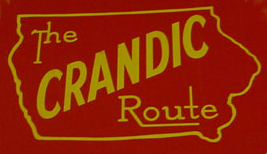
The Cedar Rapids and Iowa City Railway, also known as the CRANDIC, is a Class III railroad operating in the US state of Iowa.
Cedar Valley (Nature) Trail is a rail trail running 52 miles (84 km) from Hiawatha, Iowa to Waterloo, Iowa.

Oasis is a small unincorporated community located in Johnson County, Iowa, United States. It lies within section 26 of Graham Township, and was once known as Graham, Iowa. It is part of the Iowa City, Iowa Metropolitan Statistical Area. As of 2005, the town had a total population of approximately 20. It contains several homes, a cemetery, and a functioning grain elevator. It was once a stop on the Burlington, Cedar Rapids and Northern Railway, later the CRI&P, whose bed has now become the Hoover Nature Trail which runs from Oasis to West Branch. West of town is the Oasis Cemetery. Oasis once featured a sign that greeted visitors but it disappeared one night.

The Rock Island Trail State Park is a 26-mile (42 km) long public rail trail in the west-central region of the U.S. state of Illinois. It was designated a National Recreation Trail in 2003.

The Mississippi and Missouri Railroad was the first railroad in Iowa and was chartered in 1853 to build a line between Davenport, Iowa, on the Mississippi River and Council Bluffs, Iowa, on the Missouri River and played an important role in the construction of the First Transcontinental Railroad.

The Burlington Junction Railway is a Class III short line railroad which was chartered in 1985. Originally operating on the southernmost 3 miles (4.8 km) of the former Burlington, Cedar Rapids and Northern Railway mainline in Burlington, Iowa after abandonment by the Chicago, Rock Island and Pacific Railroad, it provides short freight hauling, switching operations, locomotive repair, and transloading services, the latter currently handling over 3,000 carloads a year. Typical commodity types transported include chemicals and fertilizer. The BJRY's primary interchange partner is the BNSF Railway.

The Iowa Northern Railway is a Class III shortline railroad operating in the U.S. state of Iowa.
The Sioux City and Pacific Railroad was a railroad in the U.S. states of Iowa and Nebraska. Built as a connection from Sioux City, Iowa to the Union Pacific Railroad at Fremont, Nebraska, it became part of the Chicago and North Western Railway system in the 1880s, and is now a main line of the Union Pacific (UP). The east-west portion from Fremont to Missouri Valley, Iowa, is the Blair Subdivision, carrying mainly westbound UP trains, and the line from California Junction, Iowa north to Sioux City is the Sioux City Subdivision.
Central Iowa Railway was a 63-mile freight railroad that operated during 1974 from Hills, Iowa to Montezuma, Iowa.
The Muscatine and Iowa City Railway was a short-lived railroad that leased several lines in southeastern Iowa in 1916 from the Chicago, Rock Island and Pacific Railway. Those lines had been built in the 1870s and 1880s by predecessors of the Rock Island, and were mostly abandoned in the 1970s.

The Burlington, Cedar Rapids and Northern Railway (BCR&N) was a railroad that operated in the United States from 1876 to 1903. It was formed to take over the operations of the bankrupt Burlington, Cedar Rapids and Minnesota Railway, which was, in turn, the result of merging several predecessor lines, the construction of which began in 1869. The corporate headquarters were in Cedar Rapids, Iowa, and it had operations in Iowa and in Minnesota. It was succeeded by the Chicago, Rock Island and Pacific Railway.
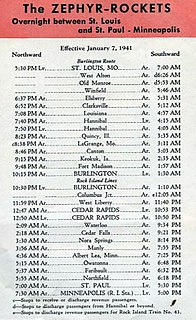
The Zephyr Rocket was an overnight passenger train operated jointly by the Chicago, Burlington and Quincy Railroad and the Chicago, Rock Island and Pacific Railroad between Saint Louis, Missouri and the Twin Cities of Saint Paul and Minneapolis, Minnesota, with major intermediate stops in Burlington, Cedar Rapids, and Waterloo, Iowa. The Chicago, Burlington & Quincy carried the train between St. Louis and Burlington, while the Chicago, Rock Island and Pacific carried it between Burlington and Minneapolis/St. Paul. Motive power and equipment were pooled and traveled the entire distance without change.
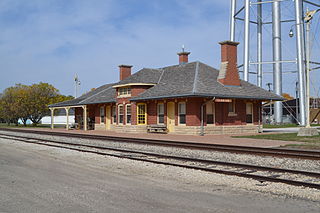
Burlington, Cedar Rapids and Northern Railroad Passenger Station, also known as Rock Island Railroad Depot and the Rock Island Depot Railroad Museum, is a historic building located in Clarion, Iowa, United States. The station was built in 1898 by contractor A. H. Connor & Company of Cedar Rapids, Iowa for the Burlington, Cedar Rapids and Northern Railroad (BCR&N). Clarion also had a Chicago Great Western Railway depot, no longer extant. At one time there were 14 trains that served the city. In 1903 the Chicago, Rock Island and Pacific Railway acquired the BCR&N, and this depot served that railroad. The single story, Romanesque Revival, brick structure measures 26 by 88.5 feet. It was added to the National Register of Historic Places in 1988.

The Burlington, Cedar Rapids & Northern Freight House, also known as the Rock Island Freight House, is a historic building located in Burlington, Iowa, United States. It was listed on the National Register of Historic Places in 1983.
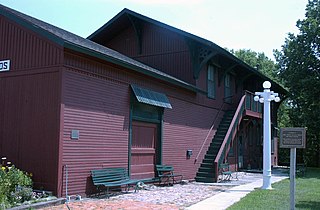
The Burlington, Cedar Rapids, and Northern Railroad-Rock Rapids Station, Railroad Track and Bridge is a nationally recognized historic district located in Rock Rapids, Iowa, United States. It was listed on the National Register of Historic Places in 1976. At the time of its nomination the district included one contributing building and three contributing structures.
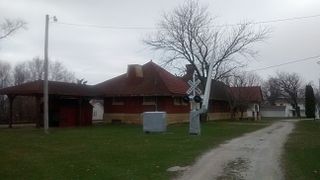
The Burlington, Cedar Rapids & Northern Passenger Station-Vinton, also known as Rock Island Depot and the Vinton Depot, is a historic building located in Vinton, Iowa, United States. Completed in 1900, this depot replaced a previous depot of the Burlington, Cedar Rapids and Northern Railway (BCR&N) located on the east side of town. It was designed by the railroad's architect and chief engineer, H.F. White, and built by A.H. Connor & Company of Cedar Rapids. The single-story brick structure was constructed on a limestone foundation. Three years after it was built, the BCR&N was acquired by the Chicago, Rock Island and Pacific Railroad. It continued to serve as a working depot until 1967. The Benton County Historical Society restored the depot and converted into a railroad museum. The building was listed on the National Register of Historic Places in 1990.
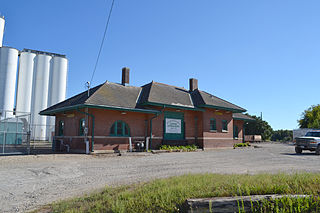
Iowa Falls Union Depot is a historic building located in Iowa Falls, Iowa, United States. The Dubuque & Sioux City Railroad, an affiliate of the Illinois Central Railroad (IC), laid the first rail track to Iowa Falls in 1866. The following year the Iowa Falls & Sioux City Railroad, another IC affiliate, continued construction of the line to the west, and it reached Sioux City by 1870. They built a plain, two-story frame depot to serve Iowa Falls. The Burlington, Cedar Rapids and Northern Railway (BCR&N) by way of its affiliate the Cedar Rapids, Iowa Falls & North Western, entered Iowa Falls in 1880. They built their own depot. It was basically another east-west route, but local business leaders desired a north-south route to serve the community.
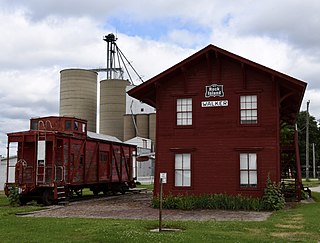
The Burlington, Cedar Rapids, and Minnesota Railroad: Walker Station is a historic building located in Walker, Iowa, United States. The two-story frame building with bracketed eaves was completed in 1873 along the Burlington, Cedar Rapids, and Minnesota Railroad tracks. The depot also served its successor railroads: the Burlington, Cedar Rapids and Northern, and the Chicago, Rock Island and Pacific. Typical of many railroad towns in the Midwest, this is the first building that was built here and the town grew up around it. It is an example of a combination depot that was used for both passenger and freight usage in smaller communities. Because it has a ground level brick platform, service here was primary passenger and light freight service. A higher level of freight service would have required a raised platform. The building was listed on the National Register of Historic Places in 1978.
References
- ↑ "Hoover Nature Trail". Iowa Trails. Iowa Natural Heritage Foundation. Archived from the original on 2012-02-03. Retrieved 2012-04-18.
- ↑ press-citizen.com | Local News
- ↑ Joseph P. Schwietertman, West Branch, Iowa (2,188), When the Railroad Leaves Town Truman State University Press, 2004; pages 140-144.